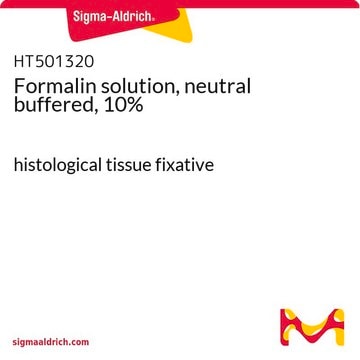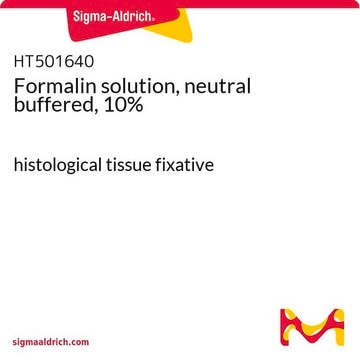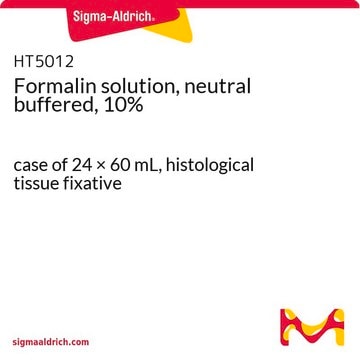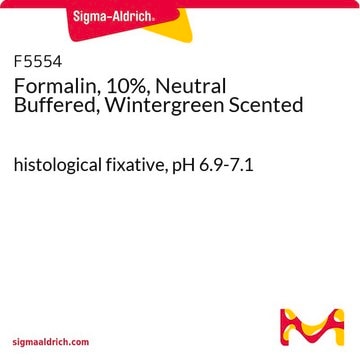HT5011
Solution de formol, tamponnée à pH neutre (10 %)
case of 48 × 15 mL, histological tissue fixative
Synonyme(s) :
Formaldehyde, Methanal
About This Item
Produits recommandés
Conditionnement
case of 48 × 15 mL
Concentration
10% formalin (approx. 4% formaldehyde)
Couleur
colorless
pH
6.90-7.10
Densité
1.080 g/cm3
Application(s)
hematology
histology
Température de stockage
room temp
InChI
1S/CH2O/c1-2/h1H2
Clé InChI
WSFSSNUMVMOOMR-UHFFFAOYSA-N
Vous recherchez des produits similaires ? Visite Guide de comparaison des produits
Description générale
Application
Conditionnement
Forme physique
Stockage et stabilité
Produit(s) apparenté(s)
Mention d'avertissement
Danger
Mentions de danger
Conseils de prudence
Classification des risques
Acute Tox. 4 Inhalation - Acute Tox. 4 Oral - Carc. 1B - Muta. 2 - Skin Sens. 1
Code de la classe de stockage
6.1C - Combustible acute toxic Cat.3 / toxic compounds or compounds which causing chronic effects
Classe de danger pour l'eau (WGK)
WGK 3
Point d'éclair (°F)
185.0 °F
Point d'éclair (°C)
85 °C
Équipement de protection individuelle
Faceshields, Gloves, Goggles, type ABEK (EN14387) respirator filter
Certificats d'analyse (COA)
Recherchez un Certificats d'analyse (COA) en saisissant le numéro de lot du produit. Les numéros de lot figurent sur l'étiquette du produit après les mots "Lot" ou "Batch".
Déjà en possession de ce produit ?
Retrouvez la documentation relative aux produits que vous avez récemment achetés dans la Bibliothèque de documents.
Les clients ont également consulté
Notre équipe de scientifiques dispose d'une expérience dans tous les secteurs de la recherche, notamment en sciences de la vie, science des matériaux, synthèse chimique, chromatographie, analyse et dans de nombreux autres domaines..
Contacter notre Service technique









